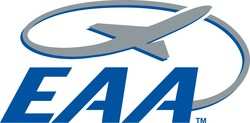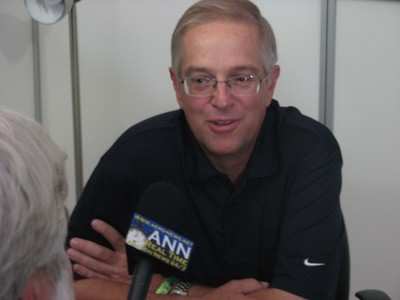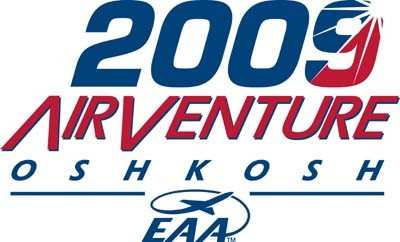Longtime Board Member Reportedly Ready To Resign, Others
Expected
 ANN is monitoring reports, this
day, of another possible high-profile resignation from the EAA
Board. David Pasahow, who had been directing the search for EAA
President Tom Poberezny's successor, is reportedly considering his
resignation over a number of issues, not the least of which was
treatment he is reported to have received from other board members
after the alleged approval of GAMA's Pete Bunce, to succeed Tom,
was thwarted by "internal politics."
ANN is monitoring reports, this
day, of another possible high-profile resignation from the EAA
Board. David Pasahow, who had been directing the search for EAA
President Tom Poberezny's successor, is reportedly considering his
resignation over a number of issues, not the least of which was
treatment he is reported to have received from other board members
after the alleged approval of GAMA's Pete Bunce, to succeed Tom,
was thwarted by "internal politics."
Pasahow's potential resignation, the second in about as many
weeks, follows the resignation of high-profile Board member and
aviation entrepreneur Vern Raburn. Pasahow is a very highly
regarded executive search expert with Blue Line Advisors. Pasahow
formed Blue Line Advisors in January 2004 to provide executive
search and leadership services to the aerospace, transportation and
other selected sectors, and had been a member of the EAA Board for
over two decades.
ANN first learned that something was reported to be seriously
amiss last summer when former L-3 Avionics Systems President,
Adrienne Stevens, was reportedly the top choice as successor to
Poberezny -- an offer in the making which was thereafter retracted
and ultimately offered to GAMA President, Pete Bunce -- who took
himself out of consideration when he found he couldn't get the
Board support he thought necessary to make a successful go at the
job.
There are a number of issues at play which make up much of the
current turmoil among the board members at EAA. In an October
letter to the EAA Board, Vern Raburn's resignation from the BoD
laid out some of his many concerns -- concerns which are becoming
more visible and prevalent among those who believe that
current EAA leadership has taken a 'wrong turn.'
Raburn cited three reasons for his resignation from the board, a
position he had held for more than 17 years.

Raburn reported that, "First, the Board decided early this
year that it must embark upon a search for a new President and CEO
in order to assure EAA's continued success. The Executive Committee
was tapped to be the de facto search committee for the new
President. Because it was unlikely that Ex Com would reach a
unanimous decision on one candidate, we decided that the choice
would be made by a majority vote of Ex Com members. That choice
then was to have been ratified by the full Board prior to Oshkosh
AirVenture 2009 so that the new President could be introduced at
the event. Based largely on a rigorous selection process undertaken
by seasoned executive search professional David Pasahow and
extensive interviews by Ex Com members a candidate was approved by
the majority of the Ex Com a week before AirVenture. The candidate
was without any question very qualified and well suited to take
over the leadership role at the EAA.
However, after committing to support the Ex Com choice Tom
reneged on that commitment. Not only did he renege but he recruited
minority members of the Ex Com to work diligently with him to over
turn the recommendation made by a majority of Ex Com members.
Numerous reasons such as the process was flawed to the candidate
was "not one of us" were stated for the abrupt reversal by Tom,
Louie and Alan.
From my perspective, the only "flaw" in the selection
process was the vigorous, highly inappropriate, albeit effective,
sabotaging of the democratic process. The simple explanation is
that Tom decided he could not give up the office of President,
particularly to an extremely well qualified candidate.
Now, the EAA must begin a new executive search. The new
search will certainly cost the EAA over a $100,000 and further the
delay of a much needed change in leadership. Additionally I believe
the corruption of the selection process has tainted, if not
poisoned, EAA's reputation, making it far more difficult to find a
candidate of the needed qualifications who would be willing to join
and lead the organization.

Second, it became abundantly clear at the July 27, 2009
Board meeting that any choice of a subsequent new candidate for the
President and CEO position would have to be personally endorsed and
ratified by both the EAA's current President and the Founder. This
action emasculated the Board with respect to its essential
independence from the President and Founder and flew in the face of
the EAA's own rules set out in the bylaws. The Board in taking this
step also chose to ignore Tom's failure to abide by his own
commitment to the process that he was part of. The Board thus
abdicated its fiduciary role, its core obligation to protect and
promote the best interests of EAA without outside influence.
Plainly put, EAA should be an organization whose sole purpose is to
serve its members, not prop up a façade for a family-run
business.
However, that is precisely the course charted by the Board
on July 27, 2009. As Mike Dale put it was time for the Board to
"grow up and start having the CEO work for the Board". I cannot be
part of a rubber stamp Board whose prime loyalty is to the Founder
and President rather than EAA members.

Third, I strongly believe that constructive dissent and
vigorous debate are essential to examining issues that confront the
Board. But, once a majority has spoken then the Board and its
members should support that decision. Any attempt to uproot and
overturn this time-honored democratic process must be rebuffed. I
can not support the people who successfully sabotaged the
democratic process of the Ex Com. And I can not continue to support
the majority of the Board that chose to work for Tom. Thus I have
no recourse other than to resign from the Board and let the Board
continue on its chosen course.
Supporters of the current EAA President point to the
continuing and growing success of AirVenture as evidence of the
efficacy of his leadership. It's been estimated that almost
three-quarters of EAA's revenue now comes from AirVenture, either
directly or indirectly. Such attendance and revenue growth are
important to EAA's future, but AirVenture, as a once-per-year
event, isn't sufficient to justify many EAA members continued
involvement in the EAA. Additionally the significant reliance on
AirVenture for funding puts the EAA in a precarious position if
AirVenture were to experience a decline.
We owe much, much more to our members and to America's
youth. We cannot allow EAA, as an organization, to become
increasingly irrelevant to EAA members and young people. Ominously,
EAA membership has continued to decline for most of the past decade
and the average EAA member is much older, perhaps older than any
other aviation organization constituency outside of Quiet Birdmen.
This in spite of the fact that thousands of new members join the
EAA every year. But then the vast majority of those new members
don't renew after the first year.
Today, EAA is far more out of touch with its Chapters than
at almost any point in its history. Its highly touted outreach
programs, such as Young Eagles, are not producing a significant
number of new certificated pilots, new aerospace professionals, new
engineers or even long-term new members. Young Eagles, with few
exceptions, produces mostly one time flights. And the majority of
EAA chapters are neither active nor loyal to EAA
headquarters.

Lastly I must make a point about general Board behavior. One
significant concern that I heard from virtually every Board member
was how disappointed and unhappy they were over not knowing enough
about the President/CEO selection process. To be very blunt you
have no one to blame but yourselves. The majority of Board members
sit on their hands and says nothing during discussion and then
later complains about not being part of the discussion. If you are
not getting the information that you feel you both deserve and need
to fulfill your director responsibilities then ask for it. I must
observe that Louie Andrew as the head of the Ex Com chose not to
inform you of the process. Yet the Board supported his
recommendations and supports the status quo in leadership.
It's time for EAA to grow up, to change, to chart a course
that will assure its future viability, relevance and success as a
strong, healthy membership-based organization whose core mission is
to support all facets of general aviation. To do that, the EAA
Board must find a capable new leader who will find ways to expand
its membership base, to support and grow its Chapters in the field.
In other words to actually deliver on a year round basis, not just
for 7 days in July, the "passion of flight."

I will truly miss many of you and the work that we attempted
to perform as a Board. Perhaps it should not be a surprise that it
is inevitable that organizations, especially ones started by a very
strong person are doomed to fail when a succession process is
attempted. At present, though, EAA is morphing mainly into a
family-run business that annually stages the US National Air Show,
called AirVenture, and little else. That's not why I joined EAA
nearly 40 years ago and have invested over 17 years serving on the
Board."
More developments in this matter are expected over the next few
days and as always, ANN will report them when adequate facts and
details are verified and made available.
 A Crazy Tesla Flying Car is Coming
A Crazy Tesla Flying Car is Coming ANN's Daily Aero-Term (11.xx.25): NonApproach Control Tower
ANN's Daily Aero-Term (11.xx.25): NonApproach Control Tower Aero-News: Quote of the Day (11.01.25)
Aero-News: Quote of the Day (11.01.25) ANN's Daily Aero-Linx (11.01.25)
ANN's Daily Aero-Linx (11.01.25) Classic Aero-TV: EAA Introduces Angle of Attack Training
Classic Aero-TV: EAA Introduces Angle of Attack Training








